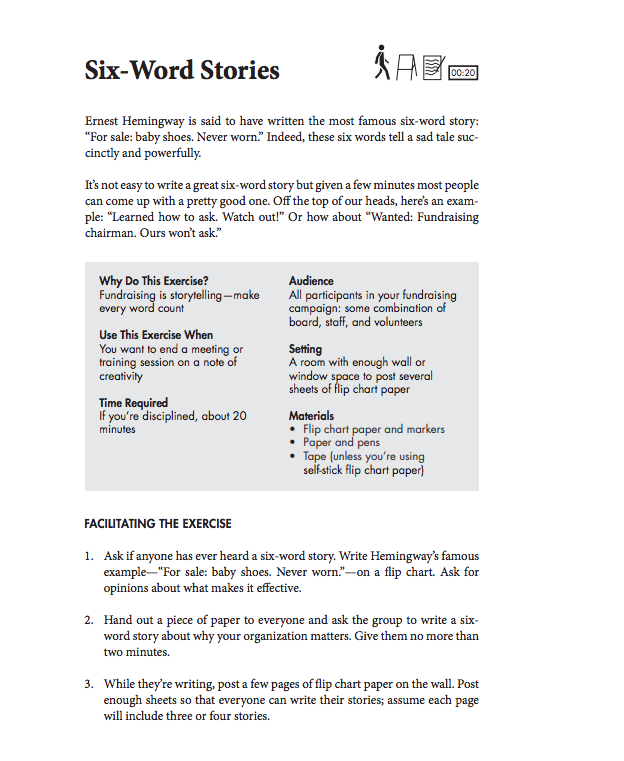
Simplicity is the ultimate sophistication.
-Leonardo da Vinci
How long does my letter need to be?
I get asked this question a lot. In fact, it’s one of the most frequently asked questions I hear when it comes to discussing the nonprofit fundraising letter. And the answer is always this: As long as it takes for you to make a compelling case for support.
Longer isn’t always better
Fundraisers are told lots of things, and some of them are outright untrue. Other ideas they’re told need more context than what’s provided. One thing fundraisers hear often is that longer letters typically outperform shorter letters in terms of fundraising results and outcomes. Four-page letters outperform two-page letters. Eight-page letters outperform four-page letters. They’ve even been told that if they’re looking to improve an appeal, simply adding another page will do the trick.
Well, conventional wisdom also reveals that longer appeal letters boost response and can generate higher average gifts.
But how? See, the how is very important.
Neophyte fundraisers might begin by adding a lot of superfluous fluff. Stuff about exactly how the organization does what they do, in unnecessary detail. Like the mechanics behind food delivery or how you get the children to the program. We’re talking details that no one actually cares about but you. Ultimately, this adds length to the letter, but it doesn’t make it very compelling, does it?
Revisiting a powerful fundraising letter example
In his Sharp Hospice conversion letter, featured in a What’s In My Mailbox installment from a few years back, Tom Ahern uses short sentences to tell an emotional (and very human) story about loss. It’s one of those narratives that has the capacity to resonate with anyone who reads it, and its beauty lies in its simplicity.
I miss Betty so much. I think of her all the time. I remember our wedding day, as if it were yesterday. You know, when you’re saying your wedding vows and come to the end where you pledge “Until death do us part,” you really don’t think it will ever come true.
But it does. For all of us, in some way. Loved ones die, and suddenly you don’t know what to do.
Do you see how succinct this language is? There are no flowery adjectives here, and yet the emotional picture is wholly compelling, isn’t it? It’s what makes it a powerful piece. Do check out the letter in full, because it follows the same tone, from start to finish.
Write for the right audience
We are often told that verbose is better, and that flowery adjectives uplift your prose, when the reality is, for a fundraising letter, extra adjectives drag it down. The excesses won’t help you get to the heart of your story, and they’re also unlikely to help you get to the hearts of your readers and supporters. Remember who your audience is, and how to write for them. How do you want to make them feel? Simple language that strongly conveys an emotional connection is the way here, because it communicates with clear intention. As tough as it can be to do, you must tell your story simply and clearly.
This can be a difficult concept to grasp. It takes time to get to the heart of your story and trim the fluff, but you can make it happen, though maybe not all in one go. My advice to you? Practice, practice, practice. Experience goes a long way and leads to a world of understanding, not to mention improvement. And be sure to edit, revise, and edit again. Your letter will go through stages, and that’s not only okay, but it’s also the way it should be.
Useful tools to guide you
I use apps for my writing, and they help streamline my storytelling and trim unnecessary fluff. They help make copy generally easier to read, too. There are two that I can’t recommend highly enough:
The Hemingway App: plug your copy into Hemingway and check out how the app analyzes your content. It’s pretty cool, isn’t it? I suggest that you aim for a readability score of 5th grade or less.
Text To Speech Reader. If you read your appeal out loud, chances are, you’ll be surprised at what you catch as you go along. Does this sound right? Do I need that extra adjective? But do you know what else you can do, that’s also super helpful? Plug your letter into TTSR, pick your speed, and listen as your letter is read aloud by a robot. You. Will. Catch. Things. Reading aloud isn’t recognized as a critical letter-writing step, but it ought to be!
An easy exercise
How else can you cut to the emotional heart of your storytelling? Try implementing this fun exercise from the book, Train Your Board (and Everyone Else) to Raise Money: A Cookbook of Easy-to-Use Fundraising Exercises:
Ernest Hemingway is said to have written the most famous six-word story: “For sale: baby shoes. Never worn.” Indeed, these six words tell a sad tale concisely and powerfully. It’s not easy to write a great six-word story, but you’d be surprised. It’s not as challenging as you might think. Give yourself a few minutes and jot down an idea or two. Off the top of our heads, here’s an example: “Learned how to ask. Watch out!” Or how about, “Wanted: Fundraising chairman. Ours won’t ask.” The possibilities are endless, really.
Click the image below to download the exercise:


















 I can’t wait to meet with you personally.
I can’t wait to meet with you personally.
Comments on this entry are closed.